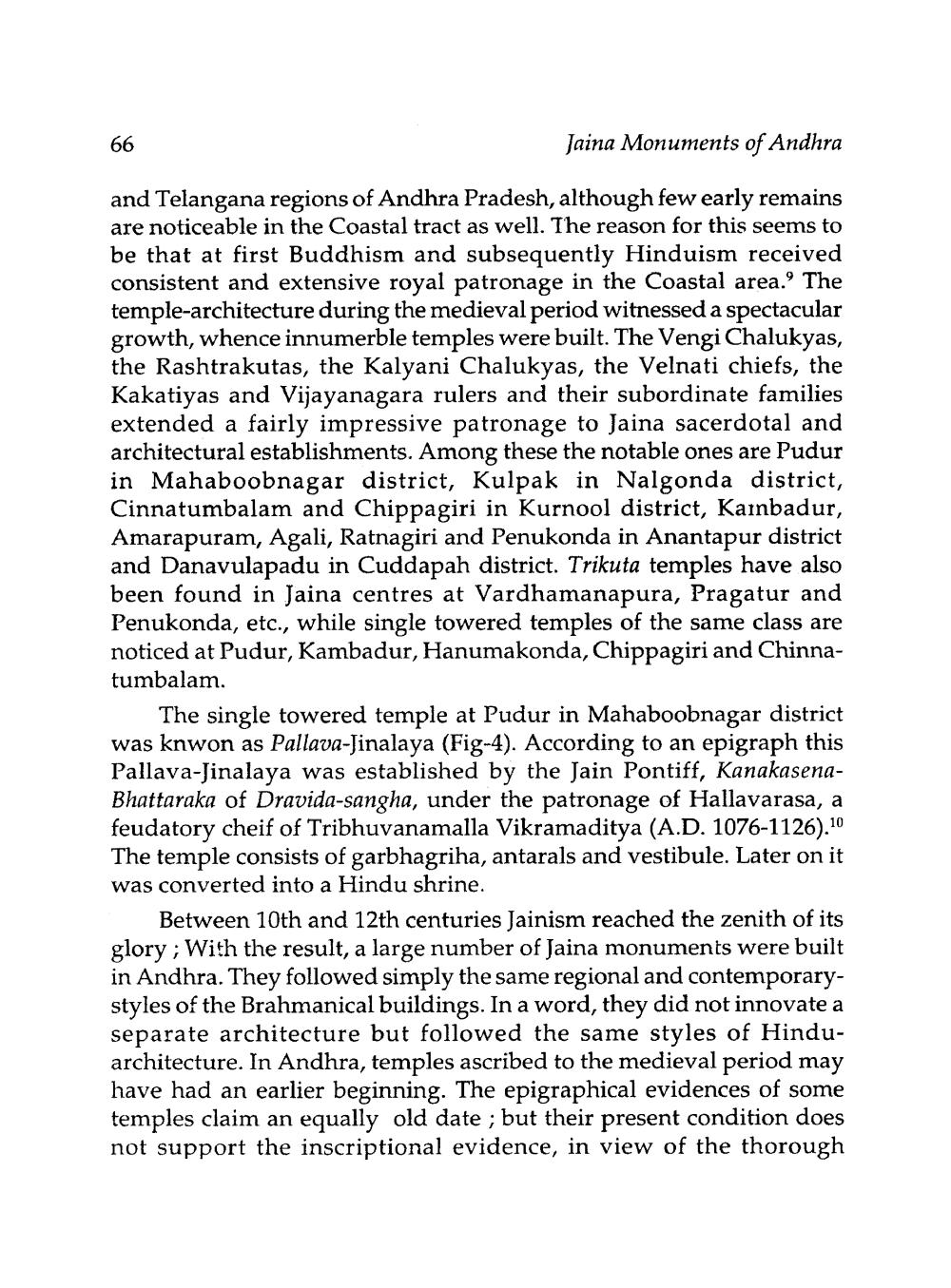________________
66
Jaina Monuments of Andhra
and Telangana regions of Andhra Pradesh, although few early remains are noticeable in the Coastal tract as well. The reason for this seems to be that at first Buddhism and subsequently Hinduism received consistent and extensive royal patronage in the Coastal area. The temple-architecture during the medieval period witnessed a spectacular growth, whence innumerble temples were built. The Vengi Chalukyas, the Rashtrakutas, the Kalyani Chalukyas, the elnati chiefs, the Kakatiyas and Vijayanagara rulers and their subordinate families extended a fairly impressive patronage to Jaina sacerdotal and architectural establishments. Among these the notable ones are Pudur in Mahaboobnagar district, Kulpak in Nalgonda district, Cinnatumbalam and Chippagiri in Kurnool district, Karnbadur, Amarapuram, Agali, Ratnagiri and Penukonda in Anantapur district and Danavulapadu in Cuddapah district. Trikuta temples have also been found in Jaina centres at Vardhamanapura, Pragatur and Penukonda, etc., while single towered temples of the same class are noticed at Pudur, Kambadur, Hanumakonda, Chippagiri and Chinnatumbalam.
The single towered temple at Pudur in Mahaboobnagar district was knwon as Pallava-Jinalaya (Fig-4). According to an epigraph this Pallava-Jinalaya was established by the Jain Pontiff, KanakasenaBhattaraka of Dravida-sangha, under the patronage of Hallavarasa, a feudatory cheif of Tribhuvanamalla Vikramaditya (A.D. 1076-1126).10 The temple consists of garbhagriha, antarals and vestibule. Later on it was converted into a Hindu shrine.
Between 10th and 12th centuries Jainism reached the zenith of its glory ; With the result, a large number of Jaina monuments were built in Andhra. They followed simply the same regional and contemporarystyles of the Brahmanical buildings. In a word, they did not innovate a separate architecture but followed the same styles of Hinduarchitecture. In Andhra, temples ascribed to the medieval period may have had an earlier beginning. The epigraphical evidences of some temples claim an equally old date ; but their present condition does not support the inscriptional evidence, in view of the thorough




